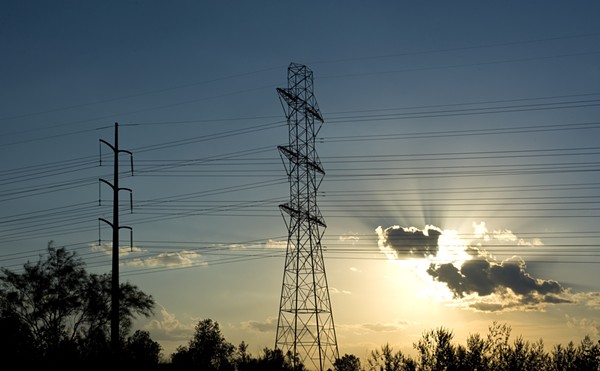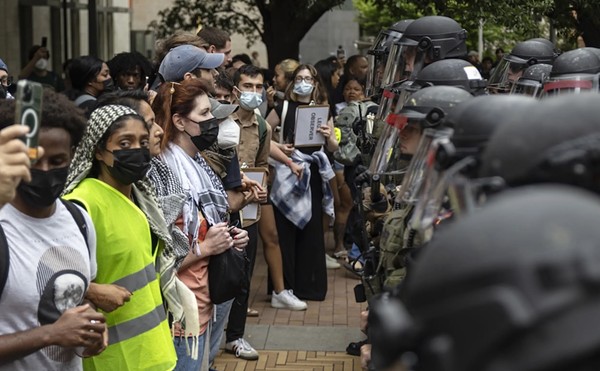For a public school district that wants to turn itself around, there are strategies and there are setbacks. South San seems to be testing them all at once.
Only a few months ago, the board worked its way out from under state supervision, just in time to confront a projected $6.4 million budget shortfall.
It also filled two unexpected vacancies on the board, only to have a majority of seats up for election again in November.
And the district has been making strides with the Texas Education Agency’s System of Great Schools initiative, only to have superintendent Abelardo Saavedra announce his imminent departure last night.
“Now is the time to take the district to new heights,” Saavedra said. He encouraged the board to find his replacement as soon as possible, but committed to the work to be done between now and March when his contract ends. He plans to take a teaching position with Texas A&M College Station.
Part of that work-to-be-done will be leading the district through its first TRE (tax ratification election) under the current tax structure, and the first proposed tax rate increase in South San since 2008. Shortly after Saavedra announced his intent to leave, the board voted to pursue a tax rate increase.
For every step forward, the Little District That Could comes upon another hill to climb.
South San has struggled with board infighting for years. In 2016, the Texas Education Agency intervened in response to calls from the community. A conservator duked it out with former board president Connie Prado and her loyal faction while grassroots advocacy group South San Kids First slowly replaced board members whenever seats came open. The board enrolled in the state’s Lone Star Governance program to help professionalize themselves, and things seem to be improving.
In spite of the years of board squabbling, South San’s schools are performing well. None have failed to meet state standards since 2014, board member Edward Mungia noted.
Unfortunately, that performance doesn’t seem to be enough for parents – the district continues to lose students.
Generally speaking, traditional schools tied to set attendance zones just aren’t cutting it. Charter schools are proliferating at a faster rate than new housing stock in the district’s backyard. Without the student base to fund them, South San has already closed Armstrong Elementary and Kazan Middle School.
Saavedra and the board are looking to the System of Great Schools initiative to create high-quality choices that attract families.
Offering magnet programs and early college options may eventually bolster enrollment, but not in time to plug the hole in next year’s budget. The district will also consider a reduction in force (layoffs), the same measure that lit SAISD’s roof on fire. South San’s administration identified 10 administrative, 17 teaching, two other staff positions to eliminate, as well as six district police officers, board president Angelina Osteguin said.
The teaching positions were all cut through attrition – teachers retiring or leaving the district by their own choosing. The district’s police force was ramped up after the Sandy Hook shootings in 2012, and, since then, students have complained about feeling excessively policed on campus.
The board is banking on feedback they’ve received indicating the community is ready to go big for the kids. “Overwhelmingly the voice that I’ve been herding is, ‘If its for the kids, why not?’ It’s about time,“ Osteguin said before Wednesday’s meeting.
The South San chapter of the American Federation of Teachers voiced support at the meeting, calling the tax increase long overdue.
Of course, nothing is certain, Osteguin admitted. “We do have a handful of individuals who are opposing practically everything we’re doing.”
One of the perennial voices of opposition, Connie Prado, voted against the tax rate increase, as did Leticia Guerra. Because board member Elda Flores was absent, Prado called for a review of the vote, claiming it required five of the seven members to pass. (Everyone else, including the district’s lawyer, seemed pretty certain that was not true.)
Prado and Guerra did vote in favor of an election (a TRE, as it is known) to ratify the tax rate increase they’d voted against moments before.
Currently, the South San tax rate – excluding debt service – is $1.04 per $100 of property value, the highest rate allowed without voter approval. In raising the rate by 13 cents to the highest allowed rate, the district will be able to generate $6.5 million, Osteguin said. Most high-poverty districts tax are at the maximum rate allowed because it brings in additional funds from the state as well. (This does not happen in high wealth districts, so they tend to tax at lower rates.) With debt service from past bonds included, the South San rate would be $1.58, and 11 percent increase over their current rate.
South San is asking voters to turn out for a special election on August 14 to ratify the new tax rate. They want to secure the new rate well ahead of the November elections when four seats on the board could flip back to candidates who would side with Prado, against the current trajectory of the district.
Politics aside, an August election allows the district to immediately act on the new (balanced) budget immediately. Osteguin said, a question mark in the revenue column “doesn’t create a clear pathway.”
Going for a tax rate increase is tricky. The public has to clearly see the need for more money, but also feel that the administration can be trusted to use the money well. You have to prove that things are both bad and good.
Lingering uncertainty over Saavedra’s replacement could steepen the climb for the tax-rate election. A national search will be underway, board members said, and they hope that the public will see their commitment to change as ironclad. They will move quickly to hire someone who shares that commitment.
Here, South San can learn from SAISD, which passed an identical tax rate increase in 2016. The community saw a vision for what superintendent Pedro Martinez wanted to do, and gave him the funds he needed to see it through. It was not Martinez alone though – the cohesion of the board behind him was a major selling point. Board members literally went door to door campaigning for the TRE.
Because South San is bringing in some of the same changes that have generated such enthusiasm in SAISD, it’s possible that the community could rally in support, even with the possibility of a board flip and a new superintendent.
Stay on top of San Antonio news and views. Sign up for our Weekly Headlines Newsletter.



















